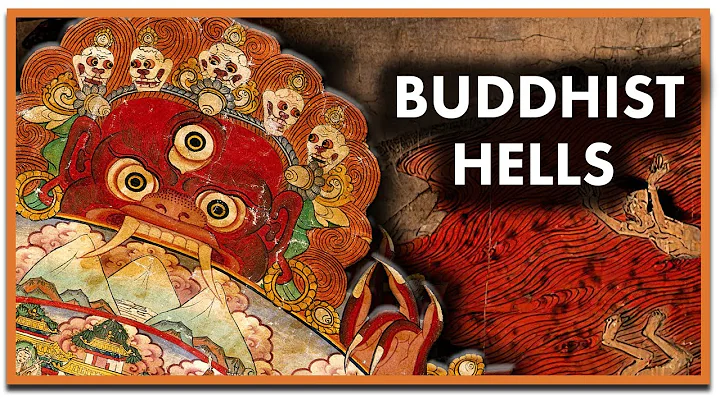

text/Wang Hanfeng
relic, Sanskrit Sarira transliteration, also translated as Sarira, Shilira, also known as relic , which means "body bone", which specifically refers to crystal beads left behind by the corpse after cremation. There are also white bone relics, black hair relics, and red flesh relics. Originally, the relics of Sakyamuni, the founder of Buddhism, were regarded as holy treasure by Buddhists, and they were worshipped as the true body of Sakyamuni and offered respect to them. Later, the monk with noble virtues cremated the remaining relics after his death and was also respected. Because this kind of relics is "influenced by precepts, concentration and wisdom, and it is very difficult to obtain, and it is the highest field of blessing" (see the "Golden Light Sutra").
In 543 BC, Sakyamuni died in Kushina City, India and was burned in the Shara twin forest. It is said that the relics were eight hu and four dou, and were taken back by kings from eight countries including Ageshi, king of Magadha, to build a tower for offering. In 270 BC, the Mauryan Dynasty, Ashoka unified all India, ruled 84,000 countries, and regarded Buddhism as the national religion. He specially took out the relics of Sakyamuni, who buried the King of Age in the city of Wangshe, and collected all the relics from other places, made 84,000 pagodas, hid the relics in them, and sent them to all directions of the world. The imperial edict ordered them to offer them piously.
In the tenth year of Yongping of Emperor Ming of the Eastern Han Dynasty (67), Indian Buddhism was officially introduced to our country. "Biography of the Great Monk of Liang" records: In the fourth year of Chiwu in the Three Kingdoms (241), the monk Kang of the Western Regions came to the Jiankang to preach, and used his sincerity to transform the Buddhist relics. Sun Quan built the first temple and built a pagoda for it, and Buddhism began to be spread in Jiangnan. In addition, "Guanghongming Collection" and other records: In the second year of Taikang in Emperor Wu of the Western Jin Dynasty (281), Liu Saha , a native of Lishi County, Xihe, discovered an ancient pagoda in the mountains of Yin County, Ningbo, Zhejiang, with Buddhist relics hidden in it. It was determined that it was one of the pagodas built by King Ashoka back then. The mountain was therefore called Ashoka Mountain. In the second year of Yuanjia in the Southern Song Dynasty (425), the Ashoka Temple was built. But later historians verified that the territory of India in the Ashoka era could not reach our country, where did the tower come from? It is actually a statement attached to the association. In the third year of Yuanhui in the Southern Dynasty (475), monk Faxian from Shangshi Temple in Dinglin of Jiankang traveled west to seek the Dharma. Because the plank road of Paoling was blocked, Yutian (now Hotan, Xinjiang) received a gift from a monk from Wuqi, a Buddha's tooth, as well as a Buddha's relics and a Buddhist scripture. After returning, he offered sacrifices at Jiankang Jian Pavilion. This is the earliest record of the worship of Buddha relics in my country.

The Sui Dynasty unified China and promoted Buddhism. Emperor Wen of Sui When Yang Jian was not elected as emperor, he received a package of Buddhist relics from the Indian monks. After ascending the throne, he issued three edicts in 83 states in the world to build a total of 110 Renshou Pagodas to serve Buddha relics. At that time, the envoys from the three kingdoms of Goryeo, Baekje, Silla, and Silla, all asked Emperor Wen of Sui to give a Buddha's relics and welcome them back to their country to offer them. Now, Yunju Temple in Fangshan County, Beijing and Qixia Temple in Nanjing still preserve Buddhist relics from the Sui Dynasty.
Tang Dynasty was a period of great development in Buddhism towards Chineseization. In the fourth year of Xianheng (673), Emperor Gaozong of Tang built a relic pagoda in Faxing Temple, Changzi County, Shanxi. In the 14th year of Yuanhe (819), Emperor Xianzong of Tang welcomed the Famen Temple in Fengxiang County, Shaanxi to the palace to offer sacrifices, which triggered the incident of Han Yu's "Recommendation for the Welcome to the Buddha's Bone" on .

After the establishment of the regime in the Song Dynasty, it reversed the policy of the previous dynasty Later Zhou to crack down on Buddhism and actively protected Buddhism to strengthen domestic rule. The Northern Song Dynasty built a relic pagoda in Ganzhou, Jiangxi Province, also known as Ciyun Pagoda . In the fourth year of Xianping (1001), the monks were able to go to Tianzhu to seek Dharma, bring back the Buddhist relics, and build a material enemy pagoda in Ding County, Hebei Province to provide support. It took 50 years to build it. In April 1978, in the heart of the Ruiguang Temple Pagoda in Suzhou, he discovered the pearl relics treasure pagoda secretly collected in the sixth year of Xiangfu in the Northern Song Dynasty (1013). At the beginning of Huangyou (1049), a pagoda was built in Youguo Temple in Kaifeng, Henan to provide Buddhist relics for Ashoka Temple. The pagoda was more than 2 meter high and was built with brown glazed glass. It is known as an iron tower. In the same year, the Empress Dowager Cao ordered the eunuch to take all the Buddha bone relics in the palace and hide them in the pagoda of Hongfu Temple in Tongxu County, Kaifeng. In the sixth year of Jiayou (1061), the Tathagata Relic Pagoda was built in Yuquan Temple in Dangyang County, Hubei.
During the Northern Song Dynasty, the Liao Kingdom in northern China rose to prosper, and Buddhism flourished to the three dynasties of Shengzong, Xingzong and Daozong (983-1101).In the 18th year of Chongxi of Xingzong (1049), the Shakyamuni Tathagata Relic Pagoda, also known as the White Pagoda, was built in Qingzhou, Inner Mongolia. In the seventh year of Xianyong in the Daozong (1071), he offered Buddhist relics to the Thousand Buddha Pagodas of the Eight Great Lingguang Temple in Xishan, Yanjing (now Beijing). He also organized a Buddhist community in the Xianlu Temple in Yanjing to support Buddhist relics. The members are all local people, and they are responsible for ceremonies on time and praise their merits. Later, the Jin Dynasty also praised Buddhism and built many pagodas, including the White Horse Temple Relic Pagoda, which was rebuilt in the 15th year of Jin Dading (1175). Between

10 and 11th century, there were more than 80 Buddhist monks who came to China to travel from all over India, most of whom brought Buddhist scriptures and Buddhist relics. During this period, more than 140 Chinese monks who went to India to seek Dharma came back one after another. It should be mentioned in particular that there were , Quanzhou monk Zhixuan, who also brought back many Buddhist scriptures and Buddhist relics. During this period, the Lion Kingdom (now Sri Lanka) sent monks to China many times to present Buddhist scriptures, portraits, Buddha relics and Bodhi tree .
Buddhism was founded in India. After it came to our country during the Eastern Han Dynasty, it gradually formed Chinese-style Buddhism. This process was tortuous and long. Especially when Emperor Taiwu of the Northern Wei Dynasty, Emperor Wu of the Northern Zhou Dynasty, Emperor Wu of the Tang Dynasty, and Emperor Wu of the Later Zhou Dynasty, four large-scale campaigns for the destruction of Buddhism were launched, which was known in history as "Three Martial Arts and One Clan Difficult". In addition to the frequent wars and the erosion of years and the storm of the years, many temples and pagodas were destroyed, monks and nuns were reduced, and the Buddha bone relics hidden in various places were either lost or lost. But as time goes by, some Buddha bone relics have been rediscovered. For example, in the late Ming Dynasty, the peasant uprising army attacked Tongxu County, Kaifeng, Henan Province. The tower of Hongfu Temple was damaged. The seven bottles of Buddha relics hidden in the first year of Huangyou in the Northern Song Dynasty were divided into pieces. One of the bottles of 78 Buddha relics changed hands several times and were hidden in Yongquan Temple in Gushan, Fuzhou, and 7 were divided into Quanzhou Kaiyuan Temple. In 1900, the Eight-Nation Alliance bombarded the Zhaoxian Pagoda of Lingguang Temple in Xishan, Beijing. The tower destroyed the Buddha's tooth, which turned out to be the Buddha's tooth brought back from Yu Tian 1253 years ago. In the 1980s, when cleaning the foundation of the Famen Temple pagoda in Fufeng County, a Buddha finger relic was found. From these examples, we can see the transformation of Buddha bone relics.

10th century, local Buddhism in India gradually declined and was on the verge of extinction between the 12th century. Since then, the Buddhist exchanges between China and India have been interrupted, and the Buddha bone relics previously hidden in our country have become even more precious, and have been used as the supreme gift for the exchanges between China and foreign countries. For example, in the 18th century, the Qing court gave many treasures to Myanmar, including a Buddha's tooth relic. In October 1956, the Buddhist Association of the Myanmar Federation of the Buddhist Association and the Sri Lanka delegation in May 1961, my country successively invited the Buddhist relics to return to China for worship for the Chinese people, which promoted diplomatic relations and enhanced friendship.
How many places in my country still have Buddha bone relics? There is no accurate survey and statistics. However, the Buddhist community regards the Buddhist relics of Yunju Temple in Fangshan County, Beijing, the Buddha Tooth Relics of Lingguang Temple in Badachu, and the Buddha Sword Relics of Fufeng County, Shaanxi as the "Three Treasures in the Country". From May 21 to 29 this year, the Buddhist community in Hong Kong welcomed the Buddhist tooth relics of Lingguang Temple in Beijing and held a ceremony meeting at the Hong Kong Stadium . A total of more than 200,000 people entered the venue to worship and make friends, praying that the Buddha tooth relics are all shining, and praying that one country, two systems, will be unhindered, the motherland will be stable and prosperous, and Hong Kong will be in good weather!
(Overseas edition of Quanzhou Evening News November 16, 20, 1999)
This article is selected from the series "Wang Hanfeng's Literary and Historical Draft" of Quanzhou Historical Center

#Telegraph Creation Challenge#







![[English] Who Am I - Lecture 1 - Ven. Guan Cheng - DayDayNews](https://i.ytimg.com/vi/KU0fUs2It5o/hq720.jpg?sqp=-oaymwEcCNAFEJQDSFXyq4qpAw4IARUAAIhCGAFwAcABBg==&rs=AOn4CLDFpQUN_QwRfC7bmP4sUadq-RcYdg)
![A Moving Masterpiece 清明上河图 [English narration] - DayDayNews](https://i.ytimg.com/vi/kxff-4GktOI/hqdefault.jpg?sqp=-oaymwEcCOADEI4CSFXyq4qpAw4IARUAAIhCGAFwAcABBg==&rs=AOn4CLBtHGLeUpJNCYDJYnZTuISQ1N5Vag)


